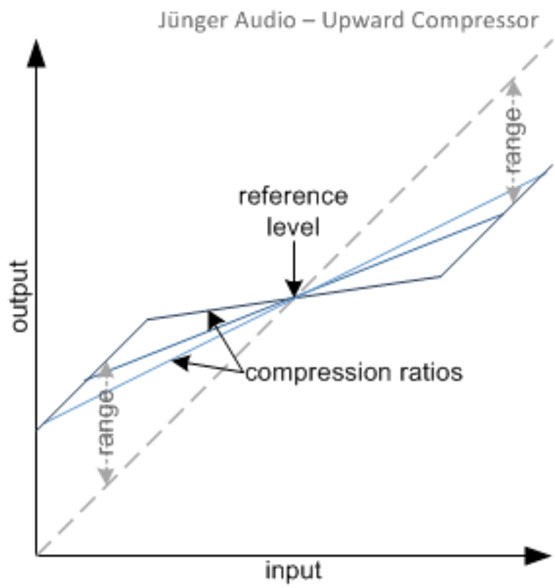Upward Compressor

Compression is achieved by increasing the level of low level signals. The lower the input signal level, the higher the additional gain applied by the compressor. The amount of amplification is depending on the compression ratio. As the level of the input signal rises, the amount of gain applied is reduced. When set to a reference level below 0 dBFS, the compression curve features a ‘turning point’. Signal levels below this point are amplified, signals above are attenuated.new module combines powerful, compact processing with an efficiency and flexibility never before seen. Designed for extremely compact multi-stream systems, these modules will add all the processing you need for efficient loudness management with the smallest footprint available today.
Microdynamic structures are maintained over the entire range of the input signal level. Even after compression the transients remain preserved. Although producing an output signal that is condensed in technical terms, the Jünger compression algorithm leaves a transparent, seemingly uncompressed sound impression. The maximum gain change of the compressor (called ‘range’) can be limited from 0 dB to 20 dB. This is especially useful to prevent an unacceptable increase in background noise.
See also:
Just download our complete Whitepaper Compressor/Expander/Gate or discover more related articles in our WHITEPAPER-Section.
